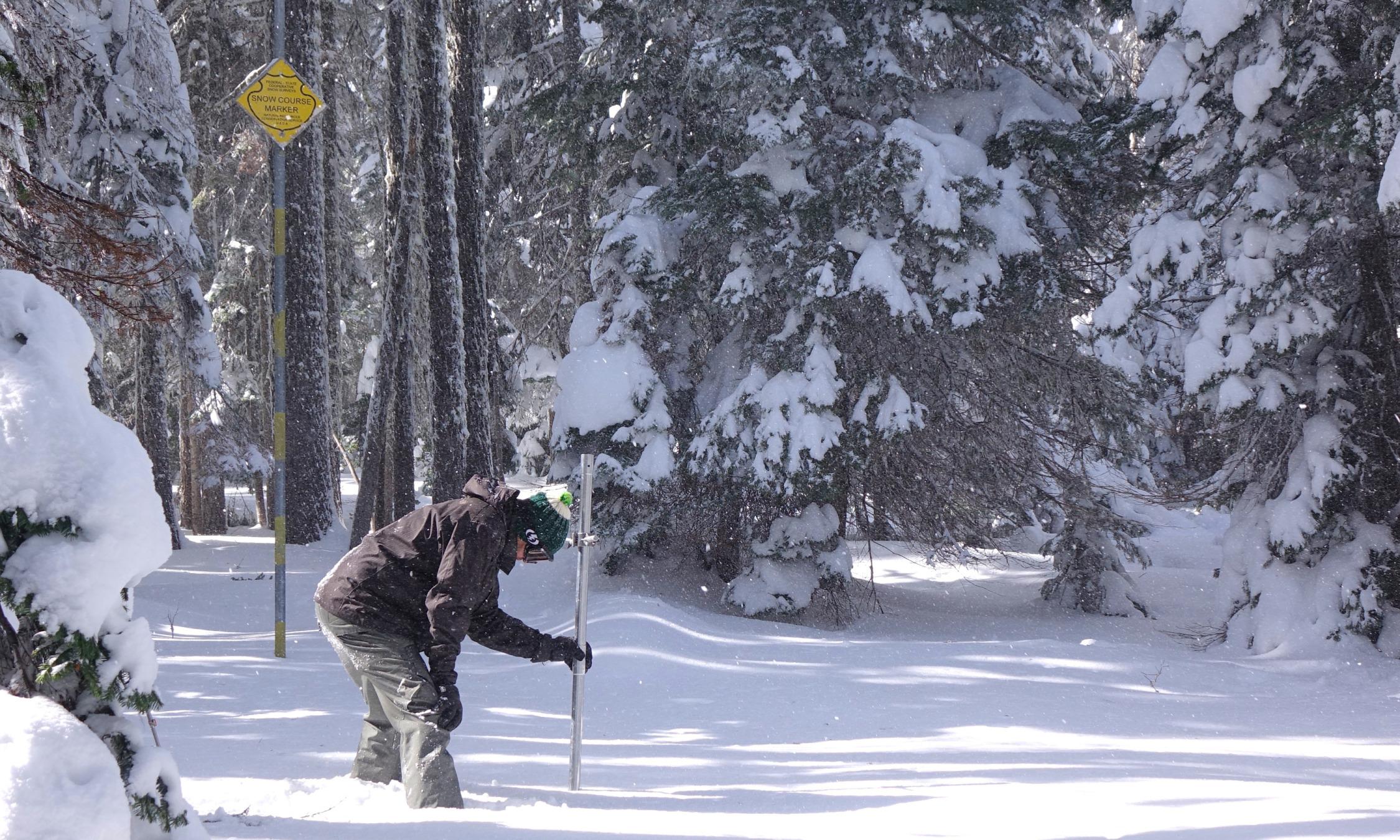
A scientist measures snowpack on Mount Ashland in this 2018 file photo.
Jes Burns, OPB/EarthFix
Annual snowpack will no longer be a guarantee in the Pacific Northwest if global warming continues unchecked.
Peak annual snowpack in the Cascade Mountains could decline by nearly a quarter by 2050 and up to nearly three-quarters by the end of the century, according to a new analysis from the Lawrence Berkeley National Laboratory.
Research scientist and co-author Alan Rhoades said the lab hopes to elevate snowpack loss as one of the American West’s foremost climate issues alongside things like sea level rise and the worsening wildfire season.
“This is one of the grand challenges both scientifically and societally for the Western U.S. in the coming decades,” Rhoades said. “And it has large implications for water management and also just mountain ecosystems.”
In the Northwest, snow accumulates in the mountains from late fall through early spring to form snowpack. In the best of times, that snow melts slowly and evenly over the course of the summer, providing water to drink, grow food, temper wildfires, and sustain plant and animal life before the cycle repeats the following winter.
Peak annual snowpack is the largest volume of snow a mountain range sees over the course of a year. It’s a key predictor of how much water will be available throughout the dry months, especially in semi-arid regions east of the Cascades.
The analysis from Berkeley Lab, one of 17 national laboratories run by the U.S. Department of Energy, points out that the volume of peak annual snowpack is declining as the widespread burning of fossil fuels drives global warming.
Oregon’s most recent state climate assessment also projects that by mid-century, less than 25% of wet days every year will have snow. In other words, snowpack is becoming much less of a sure thing.
“If you have your precipitation … predominantly falling in the form of rain instead of snow, your runoff from the mountains downstream to where all the water users are is going to be much flashier,” said research scientist and co-author Erica Siirila-Woodburn. “So you have a further disconnect in time between when your water is supplied and when water demands are higher.”
The researchers reviewed hundreds of scientific studies, honing in on 18 of them to develop projections for when “low-to-no-snow” winters would arrive for several Western mountain ranges, including the Cascades.
The analysis defines as “episodic low-to-no-snow” a period of five years in which more than half a mountain range experiences 30% or less peak annual snowpack. It defines a similar period of 10 years as “persistent low-to-no-snow.”
Western mountain ranges, including the Cascades, could experience persistent low-to-no-snow by the 2070s, according to the analysis. California may get there even earlier.
The authors have called for more scientific analyses of snowpack loss to make more robust projections.
The Berkeley Labs analysis was published in the journal Nature Reviews Earth & Environment.



